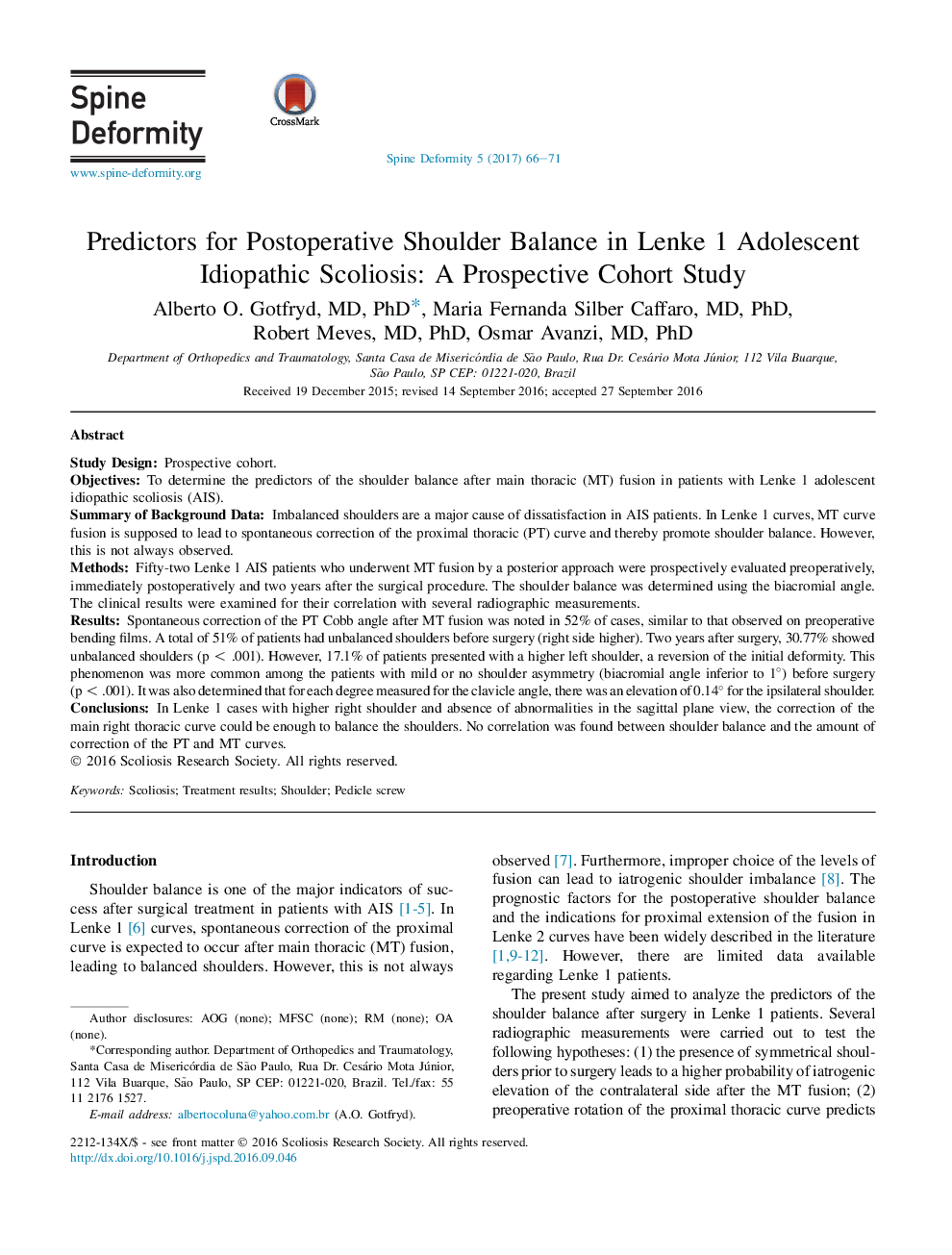| Article ID | Journal | Published Year | Pages | File Type |
|---|---|---|---|---|
| 5712739 | Spine Deformity | 2017 | 6 Pages |
Study DesignProspective cohort.ObjectivesTo determine the predictors of the shoulder balance after main thoracic (MT) fusion in patients with Lenke 1 adolescent idiopathic scoliosis (AIS).Summary of Background DataImbalanced shoulders are a major cause of dissatisfaction in AIS patients. In Lenke 1 curves, MT curve fusion is supposed to lead to spontaneous correction of the proximal thoracic (PT) curve and thereby promote shoulder balance. However, this is not always observed.MethodsFifty-two Lenke 1 AIS patients who underwent MT fusion by a posterior approach were prospectively evaluated preoperatively, immediately postoperatively and two years after the surgical procedure. The shoulder balance was determined using the biacromial angle. The clinical results were examined for their correlation with several radiographic measurements.ResultsSpontaneous correction of the PT Cobb angle after MT fusion was noted in 52% of cases, similar to that observed on preoperative bending films. A total of 51% of patients had unbalanced shoulders before surgery (right side higher). Two years after surgery, 30.77% showed unbalanced shoulders (p < .001). However, 17.1% of patients presented with a higher left shoulder, a reversion of the initial deformity. This phenomenon was more common among the patients with mild or no shoulder asymmetry (biacromial angle inferior to 1°) before surgery (p < .001). It was also determined that for each degree measured for the clavicle angle, there was an elevation of 0.14° for the ipsilateral shoulder.ConclusionsIn Lenke 1 cases with higher right shoulder and absence of abnormalities in the sagittal plane view, the correction of the main right thoracic curve could be enough to balance the shoulders. No correlation was found between shoulder balance and the amount of correction of the PT and MT curves.
